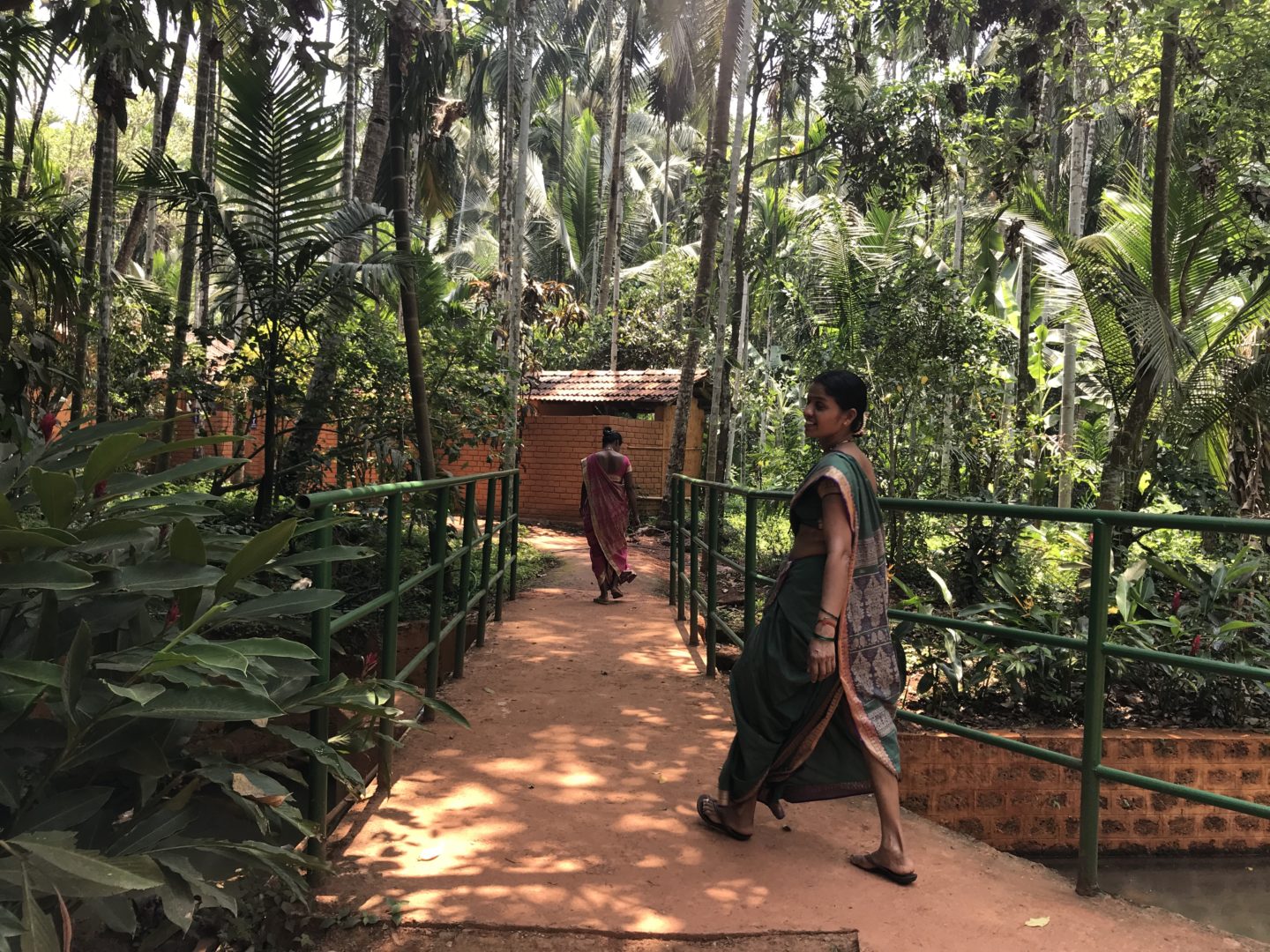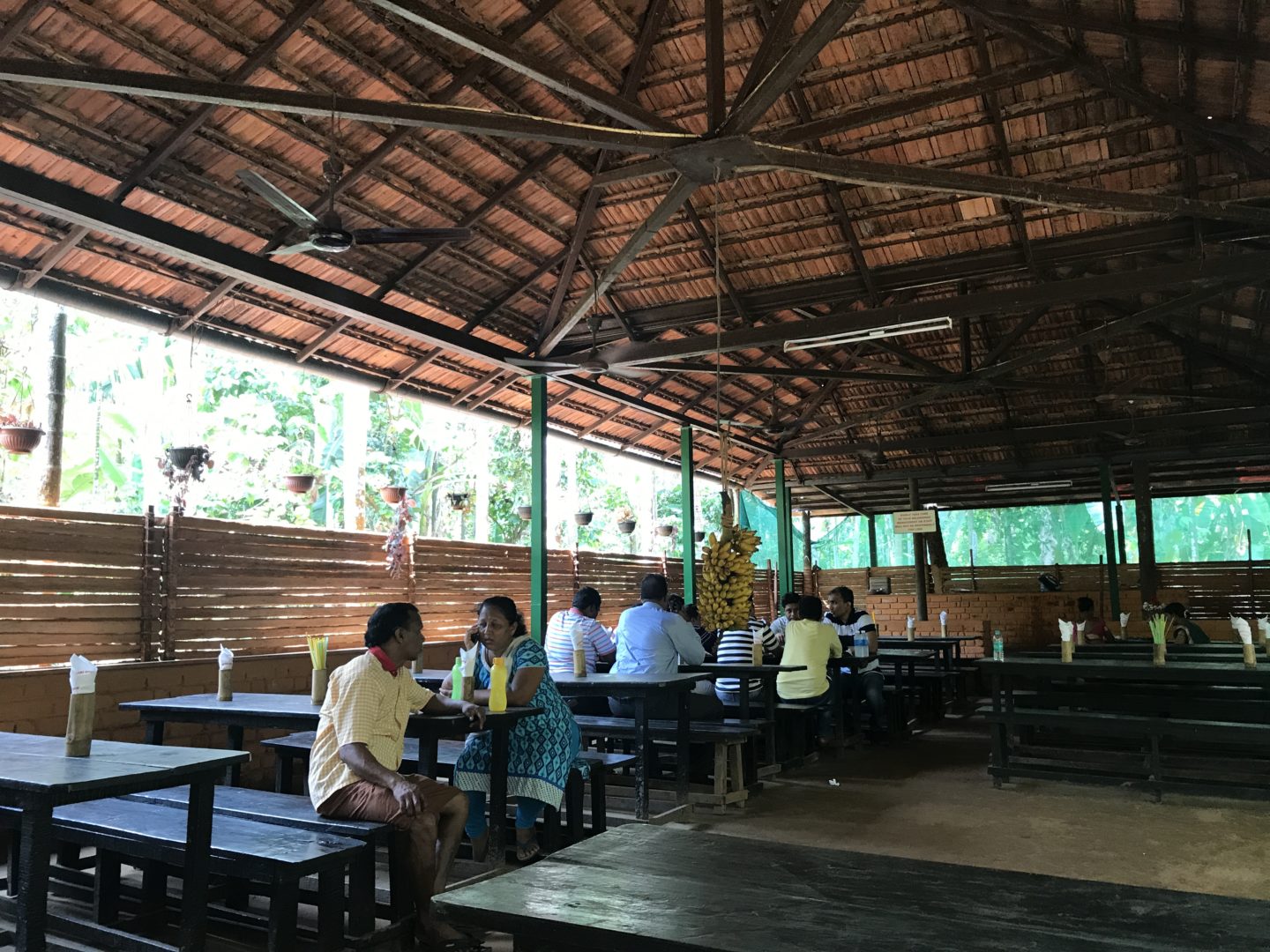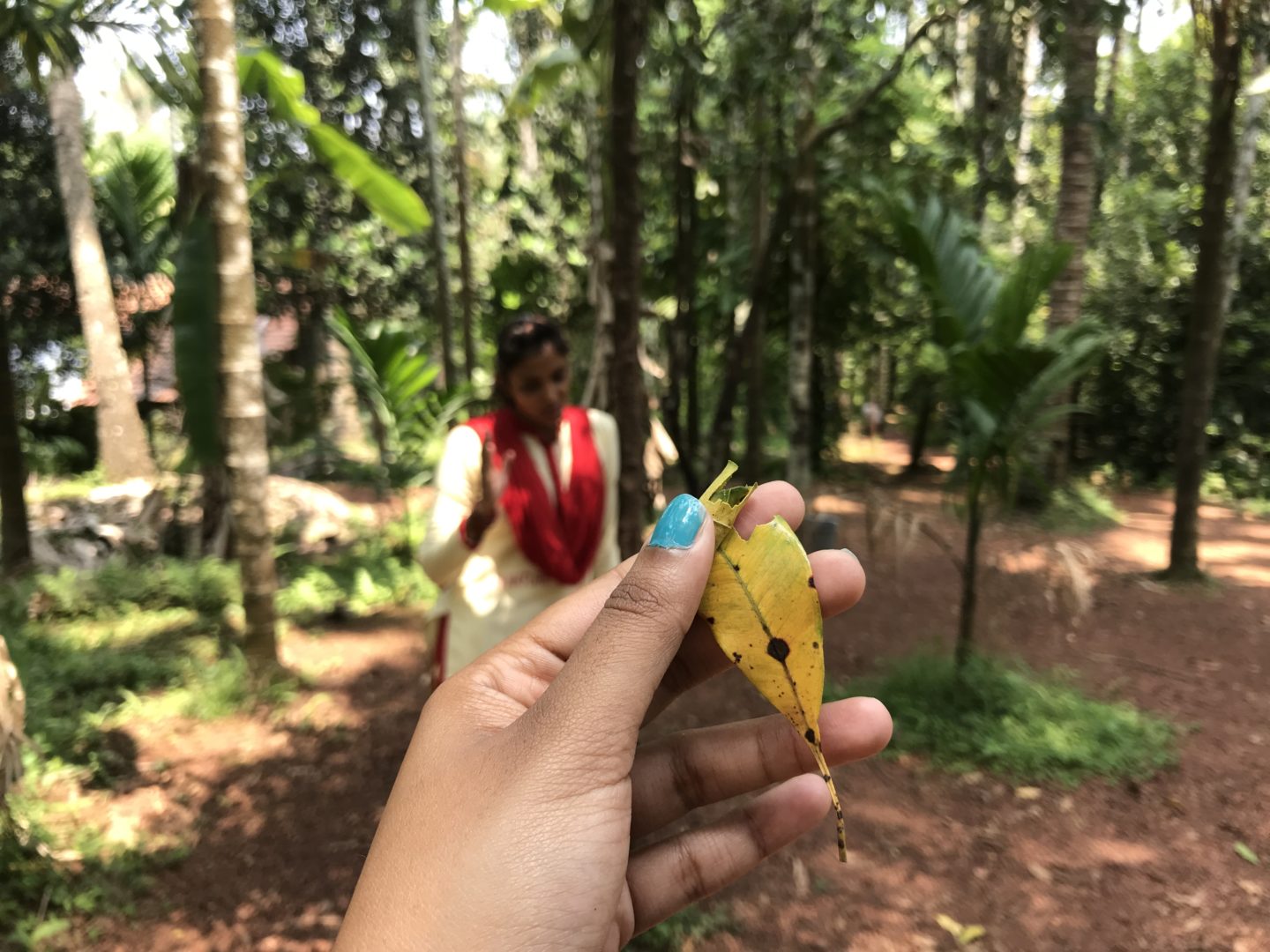Variety is the spice of life, they say. So when you’re in Goa, shake things up a bit. Dust the sand off your feet, grab that sunhat, and do something off-beat, like visiting the Spice Farm in Goa.
The Sahakari Spice Farm is a well-known spice plantation located in Ponda, South Goa. While tourists who visit the state with the intention of just going with the flow usually miss out on visiting this lovely place, those who plan and research things to do in Goa already have it on their itinerary.

On arriving at the Spice Farm in Ponda, you will have to pay an entrance fee of Rs. 400, post which, you can proceed to a rustic little open-air canteen where you will be served with some refreshments – usually a green tea and some cashew seeds, while a guide is assigned to you. Tours around the spice plantation happen in groups of 6-8 people.


Our guide, Geeta, was a treasure trove of information and informed us that the Sahakari Spice Plantation is spread over 200 acres of land. Visitors are taken on an excursion around 2 acres of that area, and the remaining 180 acres are used for spice cultivation. The 45-min walk is leisurely and not strenuous in any way, and the fascinating tit-bits of info provided by the guide as you walk along are enough to keep you engrossed.
From common spices like pepper, cinnamon and chilli to others like betel nut, mace and nutmeg, I was surprised at how little I knew about how spices are grown and the painstaking work in cultivating and processing them. Geeta also told us fascinating facts about the benefits of certain spices. Did you know that chewing on an elaichi pod can be improve memory? And that nutmeg can act as a hallucinogen when you consume more than you should? With all our spices and masala-mixes coming in packets these days, we really take them for granted, don’t we?
Vanilla, another flavour most of us love was shown to us on the tree. Vanilla is not native to Goa and the specific kind of birds and bees that pollinate vanilla aren’t present in Goa either. Which is why vanilla flowers at Sahakari Farms are artificially pollinated by hand which is a painstaking task! Once ready, it lasts only for a day and needs to be plucked immediately, before drying for 4-5 months, yielding only a tiny amount of vanilla. No wonder it is the 2nd most expensive spice worldwide!
The Sahakari Spice Plantation also has their own elephants, and most people visit with the intention of bathing them. You will see an elephant walk around the property as an attraction (or more of a distraction to kids who may not really be interested in learning about spices.)
The tour of the spice farm in Goa will also take you to a tiny distillery where the guide will explain how two of Goa’s signature drinks – Feni and Urrak are made. Did you know that feni aids digestion? Indeed it does, when taken in small doses…which was something I never knew! Further on, guests will be treated to a demo of how a long, slender betel nut tree is climbed and how a betel nut plucker deftly swings from tree to tree like Tarzan.
Even though I’m not a enthralled by plants, I really wish I had a pen and paper to write down the info my guide was dispensing!
Your tour may end with you feeling a little sticky with the humidity, so as you exit, a ladle-full of cold water mixed with essential oil will be poured down your back, leaving you squealing with relief at the sudden refreshment. End your trip to with a hearty lunch which is actually fantastic and you can buy spices or natural oils as souvenirs to take back with you – it can’t get any more organic than this!
Hope this convinces you to take a trip to the Spice Farm in Goa! Photographers, chefs, home-cooks, nature-lovers… this place is a treat and you will definitely leave enlightened and refreshed in equal measure.
Follow me on Facebook, Twitter and Instagram for more things to do in Goa! Until next time!